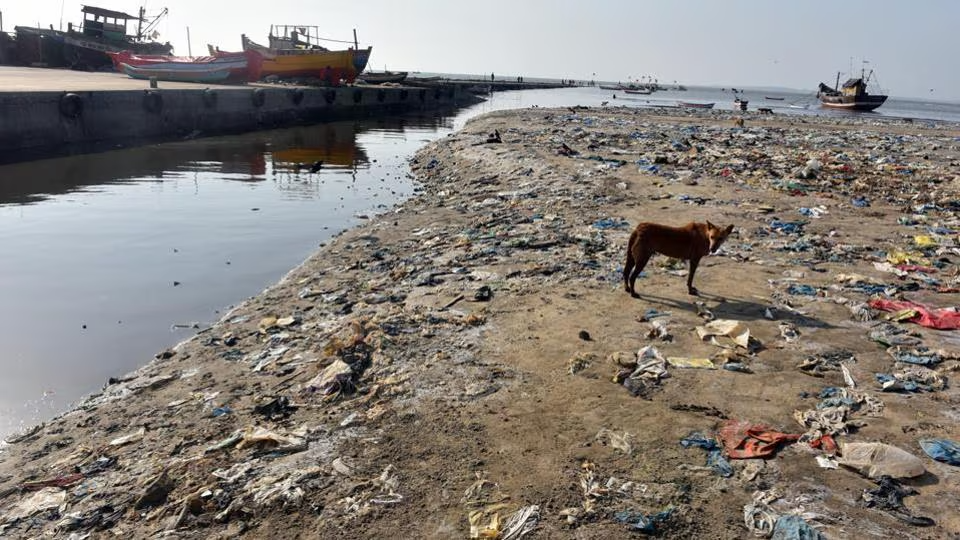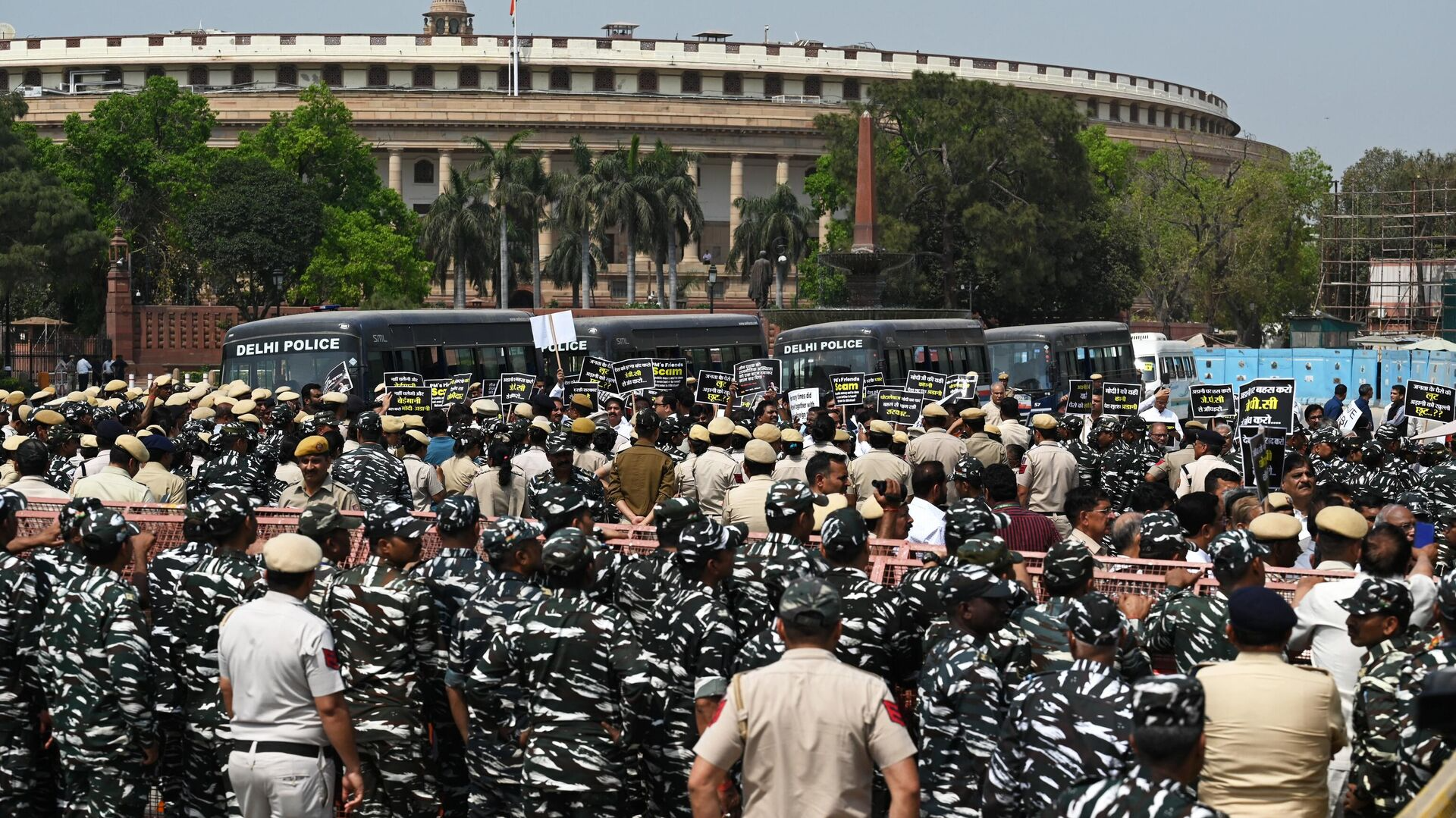Delhi Launches City Cleaning Drive
Posted On July 11, 2025

In a landmark initiative aimed at transforming the national capital’s urban hygiene landscape, the Government of Delhi has launched an extensive citywide cleaning drive that seeks to address long-standing issues of waste mismanagement, pollution, and civic neglect. The campaign, officially titled “Delhi Swachhta Abhiyan”, was flagged off with great urgency and a commitment to rejuvenating the city's public spaces. The multi-departmental initiative, which brings together municipal corporations, environmental agencies, resident welfare associations, and local police, aims to usher in a visible and lasting cleanliness revolution in both residential and commercial zones. The campaign began with a focus on high-footfall areas, including markets, roadsides, schools, and public transport nodes, and will gradually extend to less-accessible areas including unauthorized colonies and urban slums.
The drive comes in response to mounting complaints about deteriorating urban sanitation in the capital, worsened by monsoon blockages, construction debris, overflowing garbage bins, and indiscriminate littering. Despite Delhi's status as a political and economic hub, its waste management infrastructure has long struggled to keep up with the population explosion and expanding urban sprawl. With this campaign, the government is not only trying to address the visible clutter on the streets but also looking to embed a sense of civic duty in the daily lives of its citizens. The city’s Chief Minister, in the inaugural address, emphasized that “cleanliness is not just a one-day exercise; it is a culture we must build together.” With over 15,000 sanitation workers mobilized and hundreds of volunteers roped in from schools and colleges, the campaign has begun to make early impressions.
The city's major civic bodies, including the Municipal Corporation of Delhi (MCD), New Delhi Municipal Council (NDMC), and Delhi Cantonment Board, have deployed additional resources including mechanized road sweepers, mobile garbage compactors, water sprinklers, and jet-pressure machines to clean streets and drains. The campaign also includes efforts to remove illegal encroachments, posters, and banners that mar the city's appearance. A special emphasis is being placed on waste segregation, with separate bins for biodegradable and non-biodegradable waste being distributed in residential and commercial sectors. In areas prone to open dumping, large hoardings have been erected to discourage littering, accompanied by fines and spot penalties for violators. The integration of smart surveillance using CCTV cameras to monitor garbage disposal and track public behavior is a unique feature of this initiative.
Educational institutions have also been brought into the fold as key partners in this drive. Schoolchildren are participating in “clean campus” competitions, and awareness workshops are being conducted to instill environmental responsibility from a young age. Furthermore, schools have been directed to ban single-use plastics within their premises, as a symbolic and practical step toward reducing plastic waste. Delhi’s environment ministry has also partnered with civil society groups to launch neighborhood campaigns promoting composting, tree planting, and rooftop gardening. Mobile awareness vans are moving through markets, colonies, and metro stations, educating people on the importance of source segregation, sustainable waste disposal, and the dangers of neglecting public hygiene.
One of the standout features of the campaign is its emphasis on inter-departmental coordination and direct public participation. District Magistrates and Zonal Commissioners have been assigned specific urban clusters for daily inspection. Their responsibilities include evaluating the cleanliness status, interacting with local residents, and ensuring that complaints are resolved within 24 hours. Local police have been tasked with ensuring that public areas remain obstruction-free, and that street vendors comply with designated zones to avoid litter congestion. The Delhi Jal Board is coordinating drain clearance and ensuring that blocked sewer systems are tackled to prevent foul smell and stagnant water, especially in the monsoon season. This coordinated push reflects the administration’s resolve to ensure the campaign goes beyond cosmetic changes and addresses the structural problems contributing to urban waste.
While the campaign has gained initial momentum and public appreciation, it is not without challenges. The lack of long-term infrastructure planning, understaffed sanitation departments, and inconsistent waste collection in informal settlements continue to hinder progress. Experts argue that while cleaning drives offer temporary relief, they must be supported by systemic reforms such as upgrading waste-to-energy plants, establishing decentralized composting units, and improving last-mile waste pickup. Moreover, Delhi's air pollution and construction dust remain unresolved problems, and unless tackled concurrently, cleanliness in the traditional sense may not fully address the health hazards faced by citizens. To counter this, the administration is exploring stricter regulation of construction sites and deploying anti-smog guns in high-traffic areas.
On the flip side, the campaign has had a ripple effect, inspiring various community-led clean-up drives and “adopt-a-street” models where local residents and businesses maintain specific stretches of roads and parks. Social media has played a critical role in generating public engagement, with before-and-after photos of cleaned areas circulating widely on platforms like Twitter and Instagram. Influencers and celebrities have lent their support, urging followers to take pride in a clean Delhi and act responsibly. The government has also set up a 24x7 helpline and app-based grievance portal where citizens can report garbage dumping, broken infrastructure, or cleaning delays, with assurances of swift redressal.
As Delhi moves ahead with its ambitious cleaning drive, the vision is to ensure that the campaign doesn’t end as a one-time effort but rather evolves into a regular civic habit. To institutionalize this, the Delhi government has proposed monthly “Swachhata Days” where local authorities, schools, RWAs, and NGOs come together to assess progress, recognize community heroes, and revise strategies. The long-term goal is to transform Delhi into one of India’s cleanest cities, setting an example for other urban centers struggling with similar sanitation and urban management issues. If successful, the Delhi cleaning drive could serve as a replicable model for citizen-government collaboration and become a testament to how large cities can reinvent themselves through collective effort, innovation, and resolve.
The drive comes in response to mounting complaints about deteriorating urban sanitation in the capital, worsened by monsoon blockages, construction debris, overflowing garbage bins, and indiscriminate littering. Despite Delhi's status as a political and economic hub, its waste management infrastructure has long struggled to keep up with the population explosion and expanding urban sprawl. With this campaign, the government is not only trying to address the visible clutter on the streets but also looking to embed a sense of civic duty in the daily lives of its citizens. The city’s Chief Minister, in the inaugural address, emphasized that “cleanliness is not just a one-day exercise; it is a culture we must build together.” With over 15,000 sanitation workers mobilized and hundreds of volunteers roped in from schools and colleges, the campaign has begun to make early impressions.
The city's major civic bodies, including the Municipal Corporation of Delhi (MCD), New Delhi Municipal Council (NDMC), and Delhi Cantonment Board, have deployed additional resources including mechanized road sweepers, mobile garbage compactors, water sprinklers, and jet-pressure machines to clean streets and drains. The campaign also includes efforts to remove illegal encroachments, posters, and banners that mar the city's appearance. A special emphasis is being placed on waste segregation, with separate bins for biodegradable and non-biodegradable waste being distributed in residential and commercial sectors. In areas prone to open dumping, large hoardings have been erected to discourage littering, accompanied by fines and spot penalties for violators. The integration of smart surveillance using CCTV cameras to monitor garbage disposal and track public behavior is a unique feature of this initiative.
Educational institutions have also been brought into the fold as key partners in this drive. Schoolchildren are participating in “clean campus” competitions, and awareness workshops are being conducted to instill environmental responsibility from a young age. Furthermore, schools have been directed to ban single-use plastics within their premises, as a symbolic and practical step toward reducing plastic waste. Delhi’s environment ministry has also partnered with civil society groups to launch neighborhood campaigns promoting composting, tree planting, and rooftop gardening. Mobile awareness vans are moving through markets, colonies, and metro stations, educating people on the importance of source segregation, sustainable waste disposal, and the dangers of neglecting public hygiene.
One of the standout features of the campaign is its emphasis on inter-departmental coordination and direct public participation. District Magistrates and Zonal Commissioners have been assigned specific urban clusters for daily inspection. Their responsibilities include evaluating the cleanliness status, interacting with local residents, and ensuring that complaints are resolved within 24 hours. Local police have been tasked with ensuring that public areas remain obstruction-free, and that street vendors comply with designated zones to avoid litter congestion. The Delhi Jal Board is coordinating drain clearance and ensuring that blocked sewer systems are tackled to prevent foul smell and stagnant water, especially in the monsoon season. This coordinated push reflects the administration’s resolve to ensure the campaign goes beyond cosmetic changes and addresses the structural problems contributing to urban waste.
While the campaign has gained initial momentum and public appreciation, it is not without challenges. The lack of long-term infrastructure planning, understaffed sanitation departments, and inconsistent waste collection in informal settlements continue to hinder progress. Experts argue that while cleaning drives offer temporary relief, they must be supported by systemic reforms such as upgrading waste-to-energy plants, establishing decentralized composting units, and improving last-mile waste pickup. Moreover, Delhi's air pollution and construction dust remain unresolved problems, and unless tackled concurrently, cleanliness in the traditional sense may not fully address the health hazards faced by citizens. To counter this, the administration is exploring stricter regulation of construction sites and deploying anti-smog guns in high-traffic areas.
On the flip side, the campaign has had a ripple effect, inspiring various community-led clean-up drives and “adopt-a-street” models where local residents and businesses maintain specific stretches of roads and parks. Social media has played a critical role in generating public engagement, with before-and-after photos of cleaned areas circulating widely on platforms like Twitter and Instagram. Influencers and celebrities have lent their support, urging followers to take pride in a clean Delhi and act responsibly. The government has also set up a 24x7 helpline and app-based grievance portal where citizens can report garbage dumping, broken infrastructure, or cleaning delays, with assurances of swift redressal.
As Delhi moves ahead with its ambitious cleaning drive, the vision is to ensure that the campaign doesn’t end as a one-time effort but rather evolves into a regular civic habit. To institutionalize this, the Delhi government has proposed monthly “Swachhata Days” where local authorities, schools, RWAs, and NGOs come together to assess progress, recognize community heroes, and revise strategies. The long-term goal is to transform Delhi into one of India’s cleanest cities, setting an example for other urban centers struggling with similar sanitation and urban management issues. If successful, the Delhi cleaning drive could serve as a replicable model for citizen-government collaboration and become a testament to how large cities can reinvent themselves through collective effort, innovation, and resolve.











